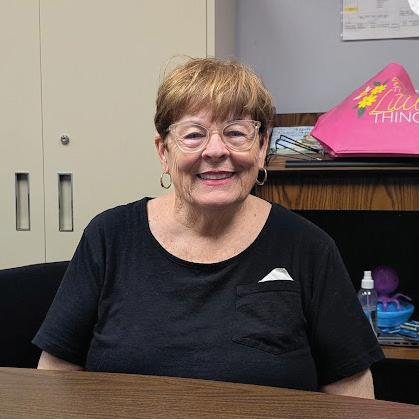

Young at Heart
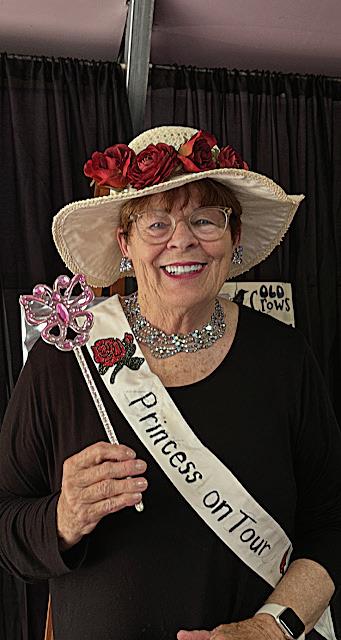
Alice Meredith stays active at age 82
By REAGAN VOETBERG News Staff Writer
ALPENA — Alice Meredith, 82, doesn’t let her age hold her back from making the most of life.
Meredith swims at the Alpena County Plaza Pool seven days a week, and she is an active participant in the Association of Lifelong Learners (ALL), the Alpena Senior Citizens Center book club, a knitting group, and a Friday fish group.
“We weren’t getting enough fish,” Meredith said. “So we go to different restaurants every Friday and have fish.”
One of the books she read in the book club, “The Blue Zones” by Dan Buettner, has inspired her to eat healthier.
The Blue Zones are different places in the world where people live to be over 100 years old, she explained.
Meredith has tried to change her diet to resemble that of the people that live in blue zones by eating less meat and fried food.
“People are eating fast food, everything is in a hurry,” she said. “So it kinda taught us to slow down, decide what we’re gonna eat and sit down and eat. I used to do a lot of eating standing up because I was always busy.”
Meredith swims for about an hour every day in the morning. She also participates in the swimming exercise classes at the pool. Swimming has been good for her arthritis, she said.
Meredith has traveled across the world, even in her old age. She has a trip planned to visit her grandson in Seattle by train. She also has a
trip planned to Romania to visit her granddaughter who teaches there.
Two years ago, Meredith visited Africa and was able to talk to ALL about her experiences. Meredith has been to China, Italy, and Spain, and has been on multiple cruises as well.
Meredith said she likes learning about different cultures and talking to the people she meets on her adventures. While she doesn’t get the full experience of what it’s like to live in that culture, she gets “bites” on her many trips.
“Another gal I met on the train,” she said. “She worked at a nursery, well, everybody that was sitting around us had questions for her.”
She added that some of the questions included things like, “ How do you grow asparagus better?” and “How do you trim tomatoes so that they grow better?”
Meredith said she started getting involved with the community and activities at the senior center when her husband passed away 15 years ago. She’s always been a go-getter, however. Meredith married young and was a stay-at-home mom for her two kids. She decided she wanted to go to school and entered a program through Ferris State University where she took classes all day for two days a week and spent the rest of her time at home in Alpena.
“I have lots of ambition,” Meredith said.
Reagan Voetberg can be reached at 989-358-5683 or rvoetberg@ TheAlpenaNews.com.
Courtesy Photo
Alice Meredith, 82, is seen dressed as the “Princess on Tour” at her meet up with the Bellaire Girls, a group of women she spends time with dressing up and having fun.
Exercises to keep seniors fit
Physical activity is crucial for people who aspire to maintain their overall health as their bodies age. Exercise improves flexibility, contributes to a healthy weight, reduces the risk for chronic illnesses, and may even help seniors maintain their independence well into their golden years.
The good news is that exercising regularly doesn’t have to be high-impact or strenuous to make an impact. Plenty of exercises are geared toward seniors that feature gentle yet powerful movements, and address specific needs like strength, bone health, cardiovascular health, and balance. Although many fitness routines are safe, it is best to consult with a doctor or another health care professional prior to beginning a new regimen so seniors learn which activities are appropriate for their individual needs and health conditions. As seniors prepare for those discussions, they can explore the following exercises many of their peers already enjoy.
Cardiovascular activities
It’s important that seniors elevate their heart rates and improve or maintain their endurance. The Centers for Disease Control and Prevention recommends 150 minutes of moderate-intensity aerobic exercise per week. These activities fit the bill for boosting the heart.
• Brisk walking: Walking is a simple activity that requires no equipment and can be done almost anywhere… even in front of a television. Walk at a brisk pace to raise your heart rate.
• Swimming: Swimming and waterbased activities are enhanced by the buoyancy of water, which reduces stress on the joints.
• Cycling: Whether riding on a stationary bike or a traditional one, cycling is a low-impact way to boost cardiovascular health and strengthen leg muscles.
• Chair marching: Individuals with limited mobility can march in place while seated, an activity that can still elevate the heart rate.
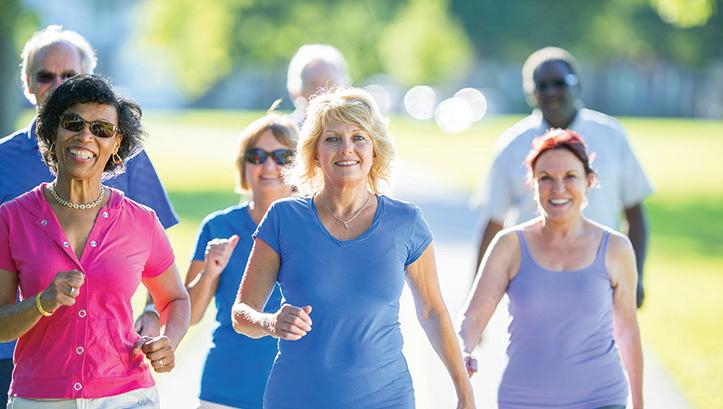
Strength training
The CDC advises engaging in strength training at least two days per week for older adults. This doesn’t necessarily have to involve lifting weights. Body-weight exercises are quite effective, too.
• Stand up: From a seated position, standing up without using hands and sitting back down works the legs, hips and core.
• Wall push-ups: This modified push up builds upper body strength without putting strain on shoulders or wrists.
• Resistance bands: Using these bands in varying strengths can effectively work arm and leg muscles.
Balance
Seniors need to focus on exercises that promote balance, which can help prevent dangerous falls.
• Single-leg stands: Standing on one leg while holding on to a chair or counter for support is a start, with a gradual build-up for longer lengths of time.
• Sobriety walk: Individuals can walk a straight line as if they are proving sobriety to a police officer, by placing the heel of one foot directly in front of the toes of another.
• Gentle hop: Hopping (or stepping) gently from one foot to another is an-
other balance technique to master.
These are just some of the exercises that are ideal for seniors who are returning to exercise or new to daily fit-

ness. People also can work with trainers who are experienced at helping seniors get fit.
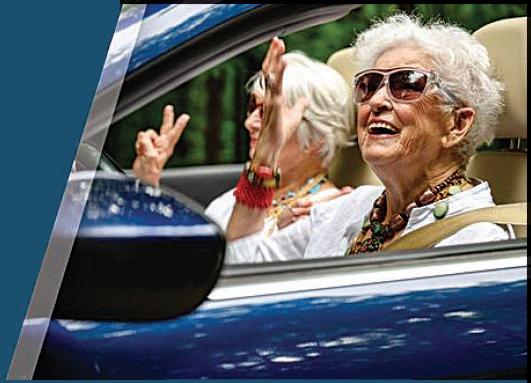
Safe medication management strategies
Medications are necessary to manage health conditions, improve quality of life and prevent illnesses. According to the National Health Interview Survey conducted by the Centers for Disease Control and Preven-
tion, American adults between the ages of 18 and 64 take an average of 3.9 prescriptions per person per year. Those age 65 and older take an average of 5.1 prescriptions per year. It is essential to manage medications properly to avoid serious health risks. Medications can interact with one another and cause adverse drug reactions when paired with over-thecounter products and even certain foods and beverages.
frequency without first consulting a health care provider. Complete a full course of antibiotics even after symptoms improve to prevent antibiotic resistance. Do not share medications with others or take someone else’s prescriptions.
Communicate effectively


Drugs.com reports drug interactions are a major cause of hospitalizations and side effects. A 2024 study published in Scientific Reports found that 5 percent of hospitalizations among patients age 65 and older (78 being the median patient age) were caused by side effects associated with polypharmacy (multiple medication use). This underscores the importance of managing medications properly. The following is a guide to help manage medications effectively.
Know your medications
The first step in safe medication use is to be fully vetted about every medication taken. This includes the brand and generic name, dosage, frequency of dosage, timing of taking the drug, how it should be administered, side effects, storage, and interactions. It’s important to keep an updated list of all medications taken, including vitamins, supplements and OTC drugs to share with each health care provider at every appointment.
Follow directions
Strictly adhere to the information on the medication label and any instructions provided by the doctor or nurse. Never alter dosage volume or
Open a dialogue with health care providers to get further clarification about medications and questions that come up. Report side effects promptly and inquire about alternative medications that may be available. Also communicate if the cost of a specific drug is prohibitive, as failing to take a medication due to cost can be a health risk.
Keep organized
Utilize an effective system for storing and organizing medications to prevent missed or accidental double doses. Use reminders on smartphones or health trackers to remember when to take medication doses. Always store drugs in their original containers, away from children and pets. Safely discard old medications when the expiration date has passed. Many communities offer drug take-back programs, and the Food and Drug Administration (www.fda.org) provides instructions on how to dispose of certain medications where take-back programs are unavailable.
Ask for help
Anyone who is experiencing difficulty managing medications should reach out to a relative, friend or caregiver service for assistance. Managing medications safely is a vital component of senior health care.
Why walking is a perfect exercise for seniors
Aging changes the human body in myriad ways. But even with those changes, seniors’ bodies have many of the same needs as the bodies of their younger counterparts.
Exercise is one thing the human body needs regardless of how old it is. But some exercises are better suited for particular demographics than others. Walking, for example, is an ideal activity for seniors, some of whom may be surprised to learn just how beneficial a daily stroll can be.
• Walking strengthens bones and muscles. The Mayo Clinic notes that regular brisk walking strengthens bones and muscles. Intensity is important when looking to walking to improve muscle strength. A 2015 study published in the journal Exercises and Sports Sciences Reviews found that achieving a 70 to 80 percent heart rate reserve during workouts lasting at least 40 minutes four to five days per week can help build muscle strength. GoodRx defines heart rate reserve as the difference between your resting and maximum heart rate, so it’s important that seniors looking to walking to build muscle strength exhibit more intensity during a workout walk than they might during a recreational stroll.
• Walking helps seniors maintain a healthy weight. Overweight and obesity are risk factors for a host of chronic illnesses, including diabetes and heart disease. The Mayo Clinic notes walking can help seniors keep pounds off and maintain a healthy weight. In fact, SilverSneakers® reports that a 155-pound person burns around 133 calories walking for 30 minutes at a 17-minutes-per-mile
pace. A slight increase in intensity to 15 minutes per mile can help that same person burn an additional 42 calories.
• Walking lowers seniors’ risk for various diseases. It’s long been known that walking is a great way for seniors to reduce their risk for cardiovascular disease. In fact, a study published in the Journal of the American Geriatrics Society noted in 1996 that walking more than four hours per week was associated with a significantly reduced risk of being hospitalized for cardiovascular disease. How significant is that reduction? A 2023 report from the American Heart Association indicated people age 70 and older who walked an additional 500 steps per day had a 14 percent lower risk for heart disease, stroke or heart failure. In addition, the Department of Health with the Victoria State Government in Australia reports walking also helps seniors reduce their risk for colon cancer and diabetes.
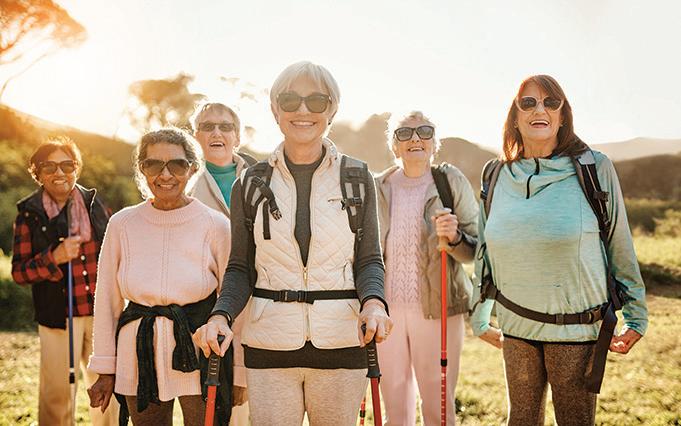
major increase in objectively measured physical activity.
Walking can benefit all people, but might be uniquely beneficial for seniors. Walking is free, which undoubtedly appeals to seniors liv-
ing on fixed incomes, and it’s also a moderate intensity activity that won’t tax seniors’ bodies. Such benefits suggest walking and seniors are a perfect match.
For a better hearing experience, you need Integrated Xperience.
Discover the hearing aids that 94% of wearers report excellent speech understanding.*
• Walking boosts mental health. Researchers at the Harvard T.H. Chan School of Public Health note that replacing one hour of sitting with one hour of a moderate activity like brisk walking can have a measureable and positive effect on mental health. The researchers behind the study, which was published in the journal Psychiatry in 2019, saw a 26 percent decrease in odds for becoming depressed with each


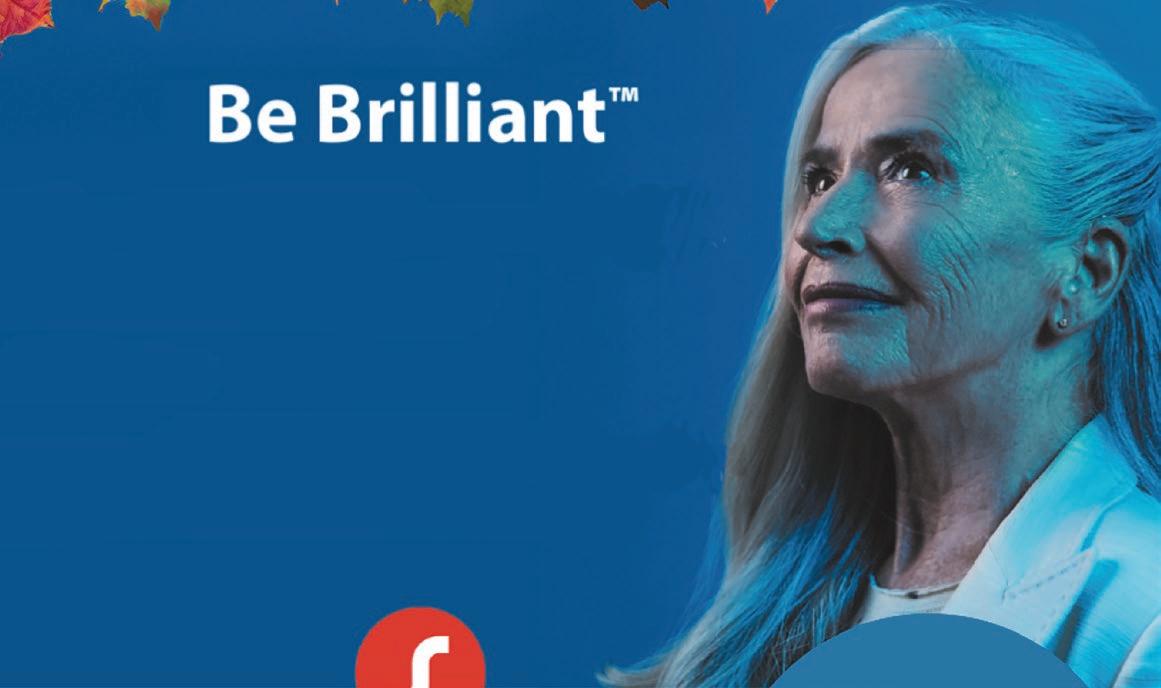
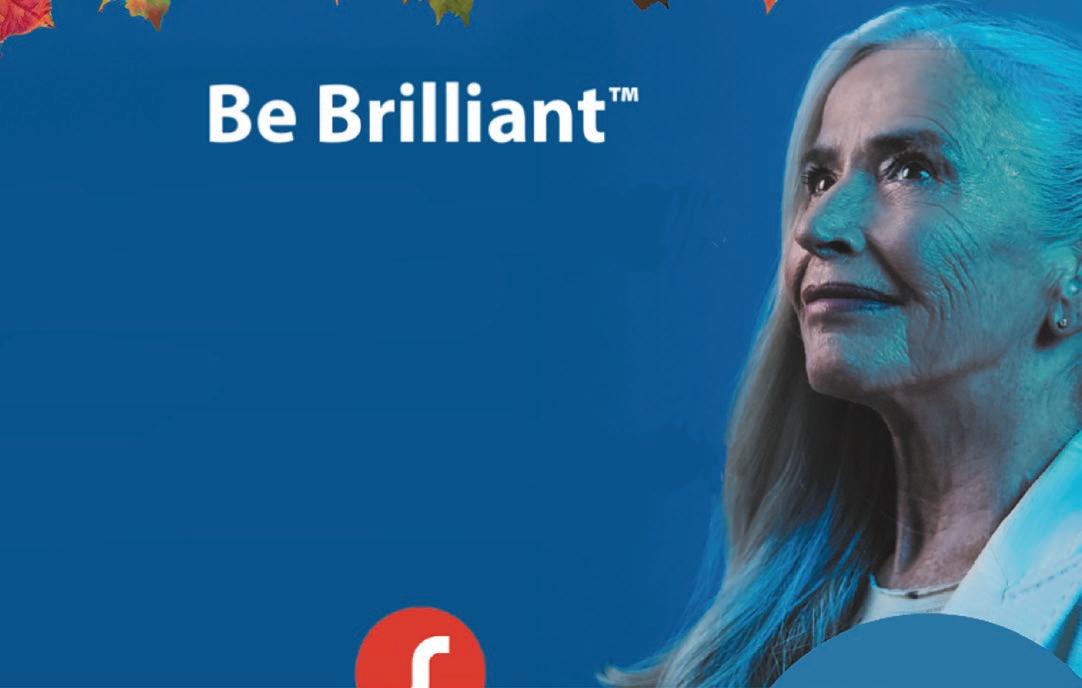
With RealTime Conversation Enhancement, your hearing aids can now enhance and follow multiple conversation partners simultaneously, even as they move or you turn your head. Available in our discreet Pure Charge&GO IX models. ‘
To learn more, call us today and schedule your free, no-commitment demonstration! 989-3S4-4289


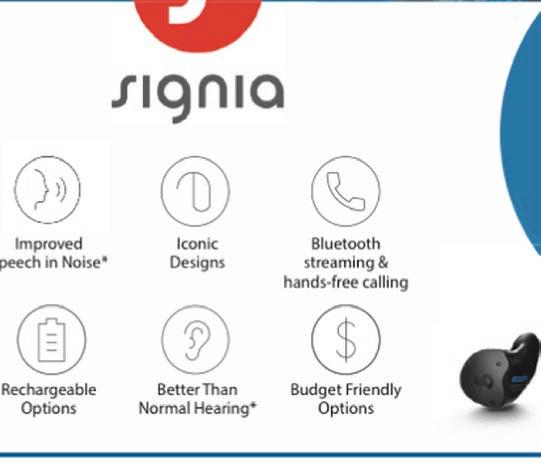



For a better hearing experience, you need Integrated Xperience. Look for it in a full range of Signia hearing aid styles, models and price points.
How seniors can cultivate a new hobby

Retirement is often characterized as a carefree time in life when adults who spent years in the workforce get to enjoy the fruits of their labors. But upon retiring, many retirees find themselves fighting boredom. A recent study from Indeed found that, as of March 2022, 3.2 percent of workers who retired a year earlier had already reentered the work-
Keith Wallace, William Pfeifer & Theodore Johnson experienced attorneys right here in Alpena
force. No two retirees are the same, and a host of variables, boredom among them, likely compelled recently retired professionals to go back to work.
Retirees who like the freedom of not working but are confronting a good bit of boredom can consider these tips to cultivate a new hobby that can help them pass the time in a rewarding and engaging way.
• Identify new (or old) interests. Many retirees discover new passions in retirement, while others turn back the clock and revisit favorite hobbies from their youth. A good way to begin cultivating a new hobby is to jot down a list of activities you always found interesting but never had the time to learn or became too busy to fully invest in. Some seniors hit the links for the first time in retirement, while others return to school to study subjects they find interesting but
did not engage with during their college years. The options are endless, and jotting down a list of new or old interests is a great way to get the ball rolling.
• Embrace new ways to engage a passion. Virtual resources like online courses and book clubs conducted over Zoom with fellow readers across the nation and possibly even the globe are a great way to cultivate a new hobby in retirement. Virtual resources can be especially beneficial for seniors with mobility issues.
• Consider locally based resources. Community parks departments and libraries may offer an array of free or affordable opportunities for seniors to engage with a new hobby. Parks departments may offer anything from cross country skiing tutorials to age-based hiking excursions, while libraries may offer weekly crafting sessions or well-
ness programs to local residents. In addition to providing fun ways to discover and cultivate a new hobby, programs offered through parks departments and local libraries are great ways to meet fellow retirees.
• Put your experience to use. Retirees with years in their field don’t have to go back to work to make use of their professional expertise. Contact local youth organizations or outreach programs sponsored by churches, libraries or local law enforcement agencies and offer to share your expertise with young people. Such opportunities allow retirees to continue to engage with their professions and help a younger generation of aspiring professionals gain valuable insight into fields they’re interested in. There’s no shortage of ways for seniors to overcome retirement boredom and cultivate rewarding hobbies.
Signs of overexertion seniors can learn to recognize
Exercise is a vital component of a healthy lifestyle. When paired with a nutritious diet, routine physical activity promotes long-term health and improves quality of life.
The benefits of a physically active lifestyle are undeniable, but it’s important to guard against overexertion. That’s particularly important for seniors, as aging produces bodily changes that pose unique challenges to older adults who are physically active. According to Easy Exercising, a Queensland-based organization that specializes in assisting seniors with exercise, aging bodies experience decreased physiological resilience over time, which makes them less adaptable to stress. That reality underscores the need for seniors to recognize the signs of overexertion, a recognition that can help seniors reduce their risk for illness and injury.
• Dizziness: The online medical resource Healthline notes a number of things can cause post-workout dizziness, including overexertion. Seniors taking group classes may be especially vulnerable to overexertion-related dizziness, as they may be trying to keep up with classmates and pushing themselves without even realizing it. Dizziness during or after a workout should not be taken lightly, and seniors should sit down immediately, catch their breath and drink water as their
heart rate slows. Seniors who become dizzy while taking a group class should alert their teacher immediately.
• Soreness: Soreness is another sign of overexertion, but seniors should recognize this symptom can be a little harder to categorize. Some soreness is common after exercise. After all, a good workout challenges the body. However, soreness that manifests as tightness, sharp pain or a throbbing or burning sensation is likely a sign of overexertion. When such symptoms present, stop exercising immediately and emphasize rest. After sufficient rest, make sure a return to exercise is less taxing (i.e., lower intensity with cardiovascular exercise and less weight with strength training).

gone too far, and make the necessary adjustments to avoid a repeat episode.
• Abdominal pain: The Maryland Pain & Wellness Center notes overexertion during physical activity can cause muscle strain and spasms that manifest as abdominal pain. Rest is necessary when such symp-
Did you know?
• Nausea: A workout should never make anyone nauseous, regardless of their age. Healthline notes feeling nauseated or vomiting after a workout are a sign that a change in routine is necessary. As noted, aging bodies experience diminished resilience over time, so feeling nauseated is a sign that a body was pushed too far during a workout. Seniors who push their bodies so far during a workout that they are feeling nauseated also are increasing their risk for injury and muscle and joint strain. Take the first sign of nausea as a warning that a workout has
toms present, and a return to exercise should be marked by a lowerintensity workout. Seniors have much to gain from exercising regularly. But it’s vital that seniors avoid overexertion, which can lead to a host of unpleasant and potentially harmful side effects.
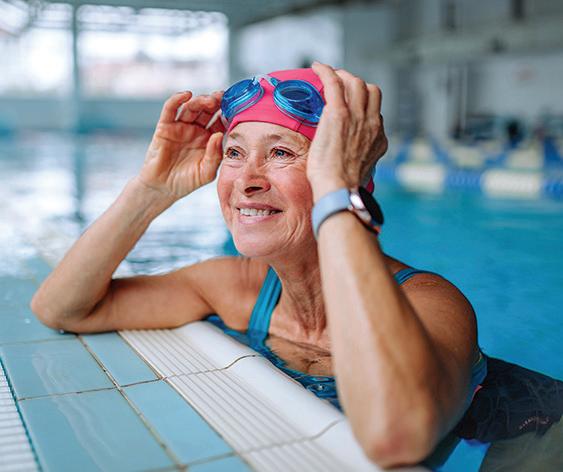
The significance of exercise is well documented, and that even goes for seniors. But in the case of exercise, can there be too much of a good thing? Should seniors be exercising every day? Seniors can exercise most days, but daily, intense workouts are not necessary. Cedars-Sinai says adults 65 and older should aim for between 2.5 to 5 hours of moderate exercise each week, which aligns with recommendations from the Department of Health and Human Services. Seniors crunched for time can engage in between 1.25 and 2.5 hours of intense aerobic exercise each week. The Centers for Disease Control and Prevention recommends 150 minutes of moderate-intensity exercise per week. That can translate into 30 minutes of daily exercise for five days, or it can be broken up into other intervals as necessary. Strength and balance training also should be a consideration. Seniors should keep in mind that overdoing intensity or length of workouts may contribute to injury, which can derail efforts to get fit.









































